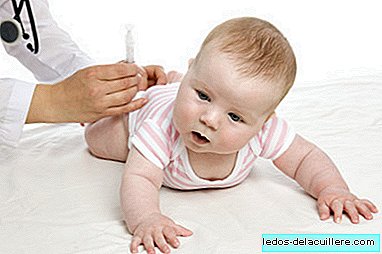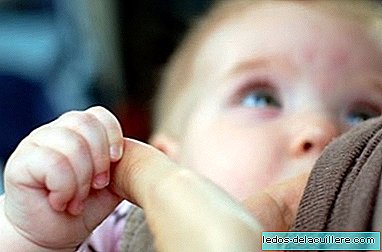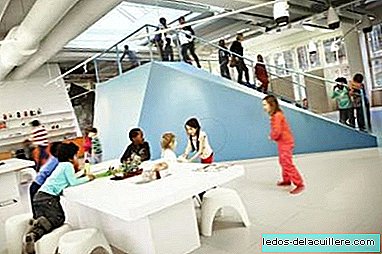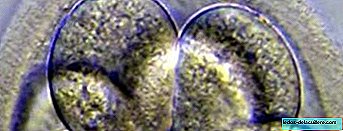
Than Childhood vaccines are no longer given in the buttock It is something that my health center has known for many years. However, there are many fathers and moms who tell me on my Facebook page that their babies are usually given vaccines in the ass, and I'm very surprised because, as I say, there has been an express recommendation not to do so for years. Why? Now I explain it to you.
Because they might not end up in the muscle
Most vaccines are intramuscularly administered. In fact, babies' vaccines must end all in the muscle, except for varicella and triple viral vaccines (measles, rubella and mumps), which are administered subcutaneously (although there are already vaccines of both that can also be administered via intramuscular).
This means that the vaccine liquid has to go to the muscle, where they will be absorbed to make the desired effect.
Although we were vaccinated when we were young, we have seen that it is very possible that the absorption is not correct and, therefore, that the effect of the vaccine does not become the desired one. In other words: the vaccine may not protect enough if given on the buttock.
The web portal Fisterra, a reference in Primary Care on the Internet, explains this in the section dedicated to the administration of vaccines, after talking about the deltoid muscle (the shoulder) and the vastus external muscle or anterolateral face of the thigh (the leg):
Muscle gluteus external superior quadrant: it is not recommended to use because it has been described a lower effectiveness of certain vaccines and greater risk of complications such as sciatic nerve injury.
In turn, the Vaccine Advisory Committee of the AEP, in response to a question about the administration of vaccines in 2013, says the following:
Buttocks are not recommended and especially in the vaccination of infants, since it is easy for the administration not to reach the muscle and deposit in the subcutaneous tissue, where it is less effective and produces more local reactions (granulomas).
So where do you get vaccines?
The same Spanish Association of Pediatrics (AEP) offers on its website information about the best way to administer vaccines to infants and children, and at no time talk about the buttock as a mode of administration.
As we read they say:
Intramuscular injections are applied: in newborns, infants and children <12 months, in the upper and lateral antero of the thigh (vast external). Between 18 and 36 months, the deltoid (individual assessment) is preferable.
And since we are, just below they say:
Intramuscular gluteal administration is discouraged to avoid injury to the sciatic nerve and due to the incorrect absorption of the antigen.
It follows that babies and children should always be vaccinated in the leg or shoulder. When they are small the leg is the one that offers more muscle mass and therefore greater certainty that the vaccine is administered correctly and remains in the muscle, and when they are older the arm is chosen for a matter of not disturbing the child much or little girl. Vaccinate in the leg when they walk, it bothers them a lot and they may even limp a day or two as a result (the AEP Vaccine Advisory Committee simplifies it like this: "In the child who does not walk on the thigh and if he already wanders on deltoids").
Fisterra is a bit more explicit and recommends stop vaccinating babies on the leg at 12 months:
Vast external muscle or anterolateral thigh face: this is the location indicated for intramuscular injection in newborns, infants and children under 12 months. Deltoid Muscle: it is used in adults and children over 12 months, and always taking into account the weight and height of the child to ensure good absorption.
So what has been said: in the arm or leg it is correct according to age; in the buttock no, a vaccine should never be put in the ass of a baby or child.











